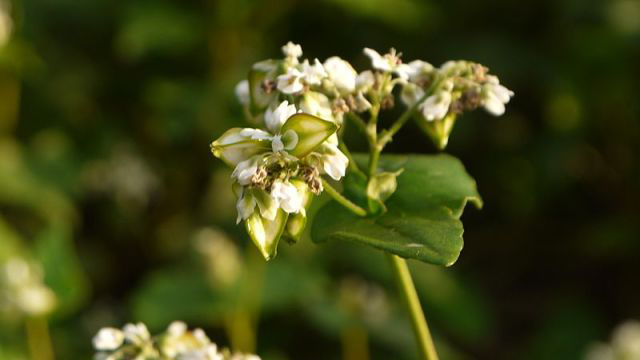Buckwheat, a short-season crop, does well on low-fertility or acidic soils, but the soil must be well drained. Too much fertilizer, especially nitrogen, reduces yields. In hot climates it can be grown only by sowing late in the season, so that it blooms in cooler weather. The presence of pollinators greatly increases the yield. The nectar from buckwheat flower makes a dark-colored honey. Buckwheat is sometimes used as a green manure, as a plant for erosion control, or as wildlife cover and feed.
The plant has a branching root system with a primary taproot that reaches deeply into moist soil. Buckwheat has triangular seeds and produces a flower that is usually white, although can also be pink or yellow. Buckwheat branches freely, as opposed to tillering or producing suckers, causing a more complete adaption to its environment than other cereal crops. The seed hull density is less than that of water, making the hull easy to remove.

